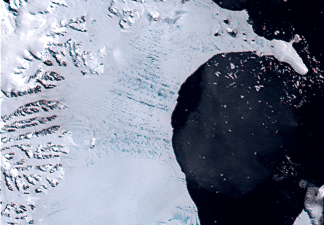To make a long story short, the episode had a part where the detectives were using Google Earth technology to show a particular location, this in itself is very advanced technology but fairly common place these days. What struck me as interesting is when the computer images which happen to be pinpointing a criminals house from the sky, zoomed in so close you could clearly see a three dimensional building-similar to what you might see using SketchUp technology. For those of you that have never heard of SketchUp it is a very useful program that allows you to build 3D images (usually of structures) and apply them to a 2D map. Having used the both programs I know for a fact that you cannot get on Google Earth and zoom in to a 3D image so quickly. The image has to be built (using SketchUp) then added to the GE. The idea here is that as cool as it looked on T.V. the average map geek might mistakenly believe that this type of technology readily exists. The increasingly advanced mapping technology has created a special niche in the computer industry. Map geeks are raking in the money right now because technological advancements out pace consumer ability to comprehend the virtual world application technology.
For me one of the most exciting applications for Virtual World technologies is not found in a video games or television but in real-time and space. For example, scientists are using this technology to monitor Earth's volcanoes and faults. Figure 2.4 is an image that does just that, monitor Earth's volcanoes and tectonic activity
figure 2.4

Go to http://hsv.com/scitech/earthsci/quake.htm for a great example of how this technology is being utilized. Think of the possibilities? If we could build virtual worlds that are based on real-time we might be able to save millions of lives every year. Think of the applications, you could monitor tornadoes, hurricanes, and global weather patterns with the click of a button.
At first there does not seem to be any draw backs to virtual world technology but if you look closely for example at how this type of technology is being applied you might find reason to pause. First, I have heard a fair number of individuals complain that Big Brother is going to use the technology to watch our every move and I cannot disagree. Our paranoid state of reason has allowed mass hysteria to develop into the perception that everyone that is not like us is against us and should be watched closely. Second, the way this technology is presented in arenas like television is a bit misleading. It take some time to build a three-dimensional image of a house and transfer that image to a virtual map like GE.
The applications for this type of technology is endless and is only limited by our imaginations, with time and training we (human race) might one day have the ability to zoom in on our own house and see ourselves watching ourselves (Strange, but true).




No comments:
Post a Comment